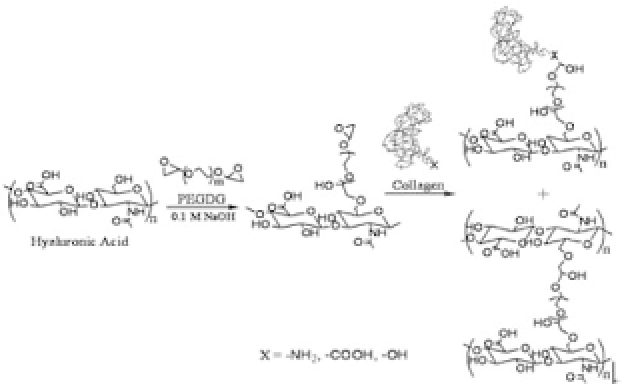Biomedical Engineering Reference
In-Depth Information
9.5 Hyaluronic Acid-Based Hybrid Hydrogels
9.5.1
HA-Collagen/Oligopeptide Hydrogels
Biodegradable polymer scaffolds serve a central role in tissue engi-
neeringbydirectingcellularprocessesbasedontheirstructuraland
biochemicalproperties.Anaturalextracellularmatrix(ECM),among
all the scaffolds, induce biological tissue engineering and remodel-
ing such as wound dressing and bones in animal.
79
To mimic these
biological and physic-chemical characteristics of the natural extra-
cellular matrix, collagen, among other natural polymers, has been
employed by many research groups, due to its abundance in the
ECM and outstanding cellular behaviors, as well as other important
biological signals. HA-collagen and HA-biotin/collagen hydrogels
were synthesized by grafting HA with the PEO-diepoxide (Fig. 9.25)
to provide support for cell adhesion. The HA-collagen hydrogels
demonstrated a continuous exterior and an interconnected porous
interior, with pore diameters ranging from 6 to 9
μ
m. HA and
HA-collagen hydrogels degraded in the presence of hyaluronidase
and collagenase, indicating that HA-collagen scaffolds were con-
trollablydegraded. Completedegradation ofthehydrogelsoccurred
within 14 days in hyaluronidase (100 U/mL) and 3 days in colla-
genase (66 U/mL).
44
Another fabrication of HA-collagen hydrogel
wasreportedbyphotopolymerizationbyemployingmethacrylation
of HA, thus obtaininga hydrogel withcollagen interpenetrated.
50
Figure 9.25.
Synthesis of the HA and the HA-collagen hydrogel.
44









Search WWH ::

Custom Search